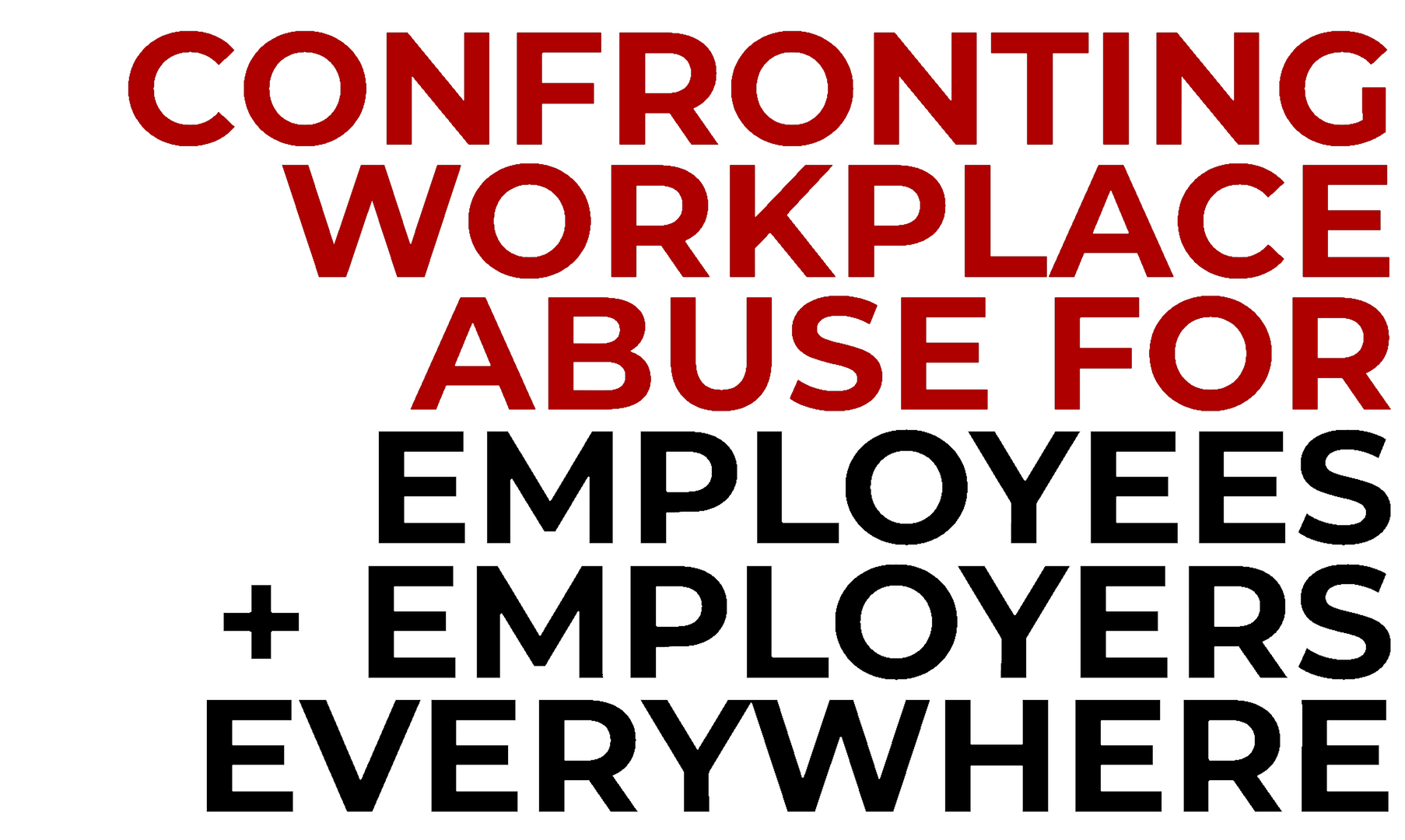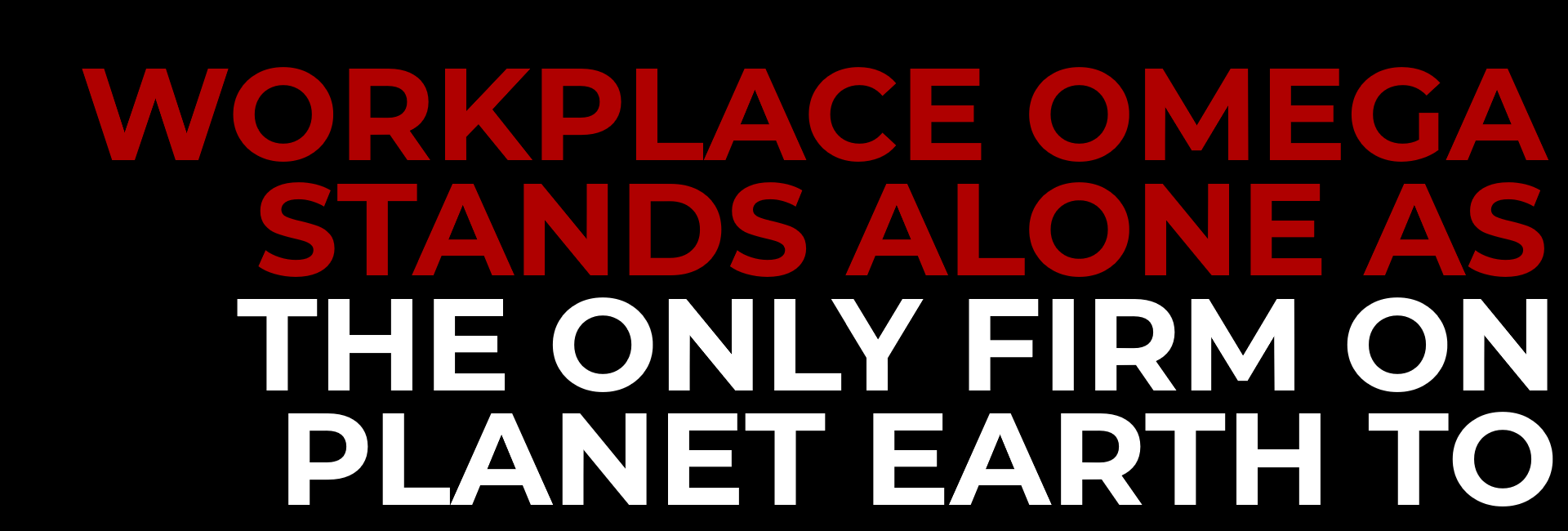
What is Workplace Abuse?
Workplace abuse (aka workplace bullying) encompasses both intentional and unwitting behaviors (words, gestures, images, actions, and failure to act) which, over time, humiliate, demoralize, or terrorize an employee or group of employees, undermine their targets’ credibility and effectiveness, and contribute to a disrespectful or hostile work environment. (Source)
Prevalence
According to recent studies, nearly 14% of American employees are targeted for emotional and psychological abuse in the workplace every year. Over 60% of them either quit, get fired, transfer, or quit after things go from bad to worse for them. Considered by many workplace advocates to be the last form of abuse tolerated in our modern society, workplace abuse appears to be on the rise in most regions. (Source)
Presentation
Workplace abuse presents as isolation and deliberate exclusion, false accusations, sabotage, intimidation and aggressive behavior, verbal abuse and belittling comments, blocking advancement opportunities, unfair evaluation, undermining work, spreading gossip / rumors, withholding information, overly critical feedback, micromanaging, overloading with work, and / or removal of responsibilities.
Secondary Workplace Abuse
Employers direct employees to bring interpersonal problems to their supervisor or Human Resources. Sadly, in 95% of workplace abuse cases, targets are gaslighted and scapegoated by HR and/or their supervisor, causing them far greater trauma than the primary abuse itself. (Source) The nexus of employer liability, the psychic vulnerabilities of the HR investigator, and the Scapegoat Mechanism explains why.
Human Cost
Workplace abuse is known to cause depression, anxiety, low self-esteem, inability to work or concentrate, trouble making decisions, lower productivity, anger, emotional disconnect, C-PTSD, trust issues, self-doubt, shame, chronic pain, fatigue, unemployment, and myriad adverse physical, financial, relational, and spiritual effects for its victims, and has resulted in suicide for some. The human cost is incalculable.

Perspective
By all estimates, workplace abuse is a trillion-dollar problem worldwide .
Much more importantly, when workplace abuse is finally mitigated to the extent that it can be, the overall relief to human suffering will be equivalent to that experienced by the global population after the development and widespread release of penicillin.
According to ChatGPT, If successfully implemented, (a solution) could be transformative, reducing the incidence of mental health disorders by as much as 10-20% among working populations. (Source)
Calculate the annual cost of workplace abuse where you work.
Factors include:
- A: number of employees in your organization (Source)
- B: average salary of employees (Source)
- 13.78% – the prevalence of workplace abuse here in the U.S. (Source)
- 61.67% of targeted employees, as a result of workplace abuse, either quit, were fired, transferred, or quit when things went from bad to worse (Source)
- 150% – estimated cost related to rehiring and training (Source)
- $23,000 – estimated cost per case due to decreased productivity, increased absenteeism, and increased health care costs (Source)
(A x B x .1378 x .6167 x 1.5) + (A x .1378 x 23,000)
Note: Since costs resulting from legal damages vary greatly from case to case, they have been intentionally omitted from this formula, providing you with a conservative estimate.

Reject the popular notion that work environment is the primary driver of systemic workplace abuse
Consider employer liability and the Scapegoat Mechanism to be foundational to understanding workplace abuse
Develop cost-saving, ethical, open source, practical solutions for all organizations, large or small, private or public
Who am I?
I’m Chris Edward Jensen, former high school English teacher of twenty years turned clinical trials coordinator turned workplace abuse advocate. The workplace abuse I experienced in 2019 was catastrophic. Today, I’m committed to slaying the dragon that almost destroyed me.
What sets me apart?
By looking at workplace abuse empirically rather than ideologically, I’m free to focus on developing wins for employees and employers alike, rather than absurdly shaming employers as my counterparts do.
You can learn more about my approach to workplace abuse by reading here:

To Potential Collaborators
I am currently reaching out to key stakeholders who have the reach, the resources, and the fire-in-the-belly to work together to confront workplace abuse once-and-for-all. If you understand the complexities of workplace abuse as I do, and you’re in a position to help, please reach out.
